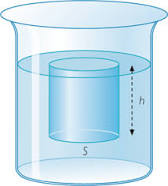4ESO FQ English 2018-2019. Unit 4 FLUID STATICS (FORCES). Article 6.

FLUID STATICS
- Website to have a general view and study of this lesson 4 about Fluid statics.
+ What is this lesson about and what does fluid statics study? :
Fluid statics is the branch of fluid mechanics that studies incompressible fluids at rest. It encompasses the study of the conditions under which fluids are at rest in stable equilibrium as opposed to fluid dynamics, the study of fluids in motion.
What exactly is a fluid? Can we understand fluids with the laws already presented, or will new laws emerge from their study? The physical characteristics of static or stationary fluids and some of the laws that govern their behavior are the topics of this chapter.
* A fluid is a state of matter that yields to sideways or shearing forces. Liquids and gases are both fluids.
+ What Is a Fluid? Go there !!
Liquids and gases are considered to be fluids because they yield to shearing forces, whereas solids resist them. Note that the extent to which fluids yield to shearing forces (and hence flow easily and quickly) depends on a quantity called the viscosity.
+ Density Go there !! Check and copy the definition of density!!
distinction between mass and density. A ton is a ton, of course; but bricks have much
greater density than feathers, and so we are tempted to think of them as heavier.
* Density exercise : CALCULATING THE MASS OF A
RESERVOIR FROM ITS VOLUME.
A reservoir has a surface area of 50km2 and an average depth of 40.0m. What mass of water is held behind the dam?
Problem solved : FOTO
* Go now to this LINK and produce a table in which to organize several
substances according to their density indicating which ones will float or sink.
Write down their density value and units and beside it say if it will float or
not just comparing them to the water density ( 1 g/ml ).
( Please try to work out the problems by yourself first. If you finally
need help then check the answers given ).
+
P = F/A Pressure equals force divided by surface or area.
F = P.A
The SI unit of pressure is pascal and 1 Pa=1 N/m2.
+ Lets go to this LINK to learn how important pressure is when considering fluids.
+ ACTIVITY FOR FRIDAY ON THE COMPUTERS :
*Check these two websites ( WEB1 and WEB2 ) and make a powerpoint or a word file just organizing and summarizing the different kind of pressures we can find in nature. Make a table or a chart organizing them while explaining their most important features. When you are done (finished) send your work to your teacher's email.
0 comentarios